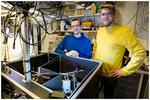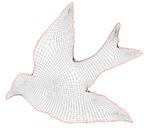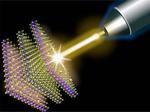Other

“The quest for a secure information network is on. Researchers at the Niels Bohr Institute, University of Copenhagen, have recently succeeded in boosting the storage time of quantum information, using a small glass container filled with room temperature atoms, taking …

“In 2010, the Nobel Prize in Physics went to the discoverers of graphene. A single layer of carbon atoms, graphene possesses properties that are ideal for a host of applications. Among researchers, graphene has been the hottest material for a …

“The computer simulations used to design, optimize, test or control a vast range of objects and products in our daily lives are underpinned by finite element methods. Finite element simulations use a mesh of geometric shapes — triangles, tetrahedra, quadrilaterals or …

“A Danish-American research team has shown that it is possible to produce ‘Majorana particles’ in a new ‘building material’. The research, led by scientists from Niels Bohr institute, University of Copenhagen, paves the road for new types of experiments - and …

“The University of Copenhagen plays a central role in an ambitious Microsoft multi-million dollar investment. Today, the tech company and the University signed a long-term collaboration agreement on the development of a general-purpose, scalable quantum computer. This is a project …

“Due to magnetism iron should - theoretically - be a poor superconductor. Nevertheless certain ironbased materials possess fine superconducting properties. Why? Because the five unbound electrons found in iron - as a result of individual modes of operation, it turns out - facilitate superconductivity …
News Quantum movement of electrons between atomic layers shows potential application of van der Waals materials for electronics and photonics

“Common sense might dictate that for an object to move from one point to another, it must go through all the points on the path. Imagine someone driving from Kansas City to Topeka on I-70 “it’s safe to say …

“Quantum technology based on light (photons) is called quantum photonics, while electronics is based on electrons. Photons (light particles) and electrons behave differently at the quantum level. A quantum entity is the smallest unit in the microscopic world. For example …

“A new paper recently published in the Journal of Molecular Biology shows how advances in molecular biology and computer science around the world soon may lead to a three-dimensional computer model of a cell, the fundamental unit of life. According …
